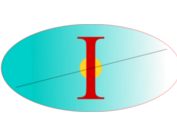Citation:
| paul2009.pdf | 298 KB |
Abstract:
Producing and controlling nonclassical light states are now the subject of intense experimental efforts. In this paper we consider the interaction of such a light state with a small molecule. Specifically, we develop the theory and apply it numerically to calculate in detail how a short pulse of nonclassical light, such as the high intensity Fock state, induces photodissociation in H2+. We compare the kinetic energy distributions and photodissociation yields with the analogous results of quasi-classical light, namely a coherent state. We find that Fock-state light decreases the overall probability of dissociation for low vibrational states of H2+ as well as the location of peaks and line shapes in the kinetic energy distribution of the nuclei.
Notes:
RBaer-Publication



